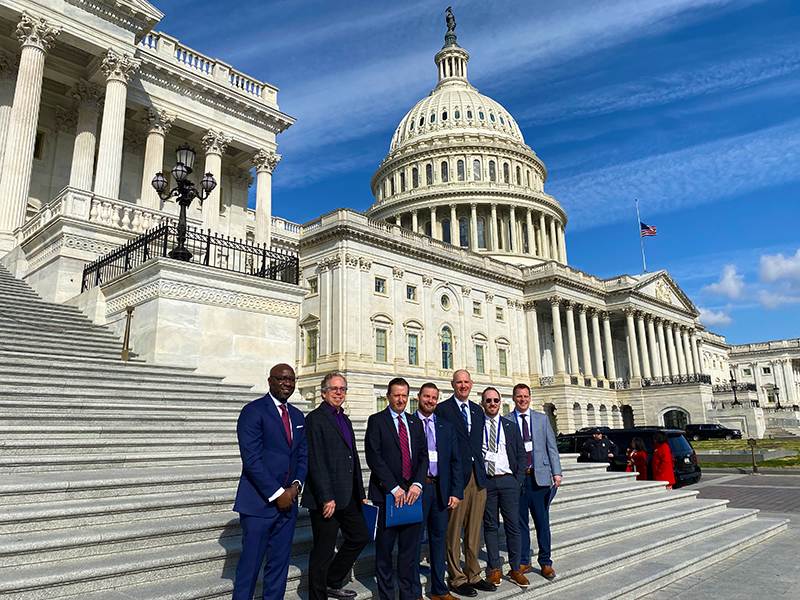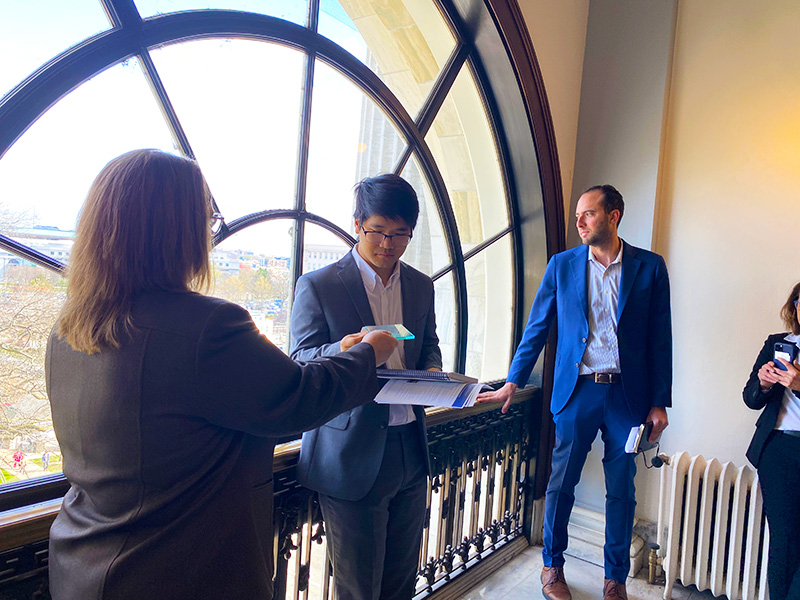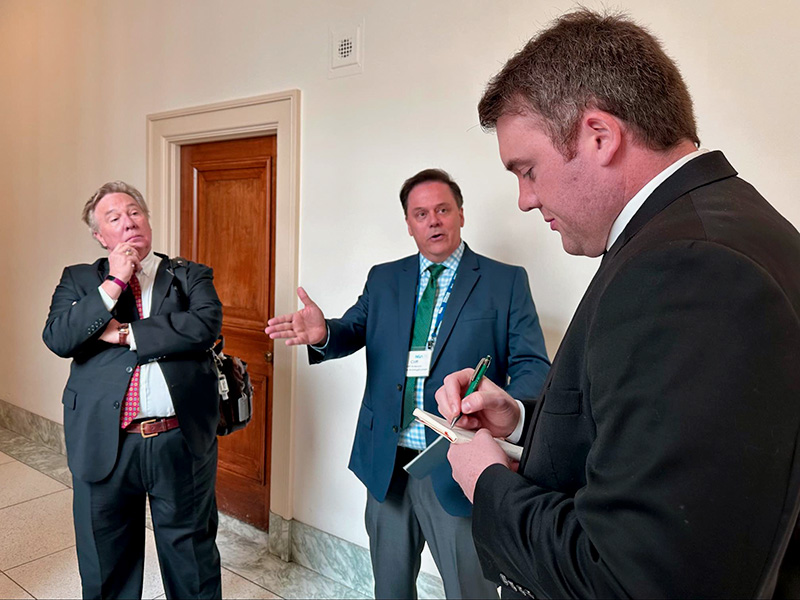Industry Leaders Present a Strong Case for Glass as a Safe, Renewable Building Material

The National Glass Association completed its second annual Glass and Glazing Advocacy Days last week, held March 27-28, in Washington, D.C. Representing the interests of its 1,800 member companies, the Association facilitated meetings between industry leaders and 30 Congressional House and Senate representatives, as well as representatives from the Department of Energy and the Environmental Protection Agency, about the glass industry and the major issues facing it today.
Installers, fabricators and manufacturers made a strong case for glass as a building material that provides safety and security, plays a central part in a sustainable economy and building industry, and provides jobs to 71,000 in the United States. “Glass is beautiful. It does everything we need it to do,” said Advocacy Day participant Julia Schimmelpenningh, technical engagement manager – architectural, Eastman Chemical Co.
Glass can protect schools and children

Advocacy Day participants’ meetings with members of Congress took place in the shadow of the school shooting in Nashville which occurred Monday, March 27. The 28-year-old shooter entered the school by shooting through a side door, and killed three children and three adults. No building codes or mandates currently exist for school security, unlike for fire safety.
“Glass is the first line of defense,” Wade Arnold, commercial director of U.S. Bullet Proofing underscored to Taylor LaJoie, legislative assistant for Sen. J.D. Vance’s office. Several industry leaders made the case for incentivizing safety glass systems as a way to ensure security for students. “These are not future theoretical products. They exist today,” Billy Strait, vice president business development, Oldcastle BuildingEnvelope explained to staff from Sen. Ted Cruz’s office. “Products exist that could have created a 15-minute delay for the shooter.”
Kayla Natividad, architectural technical services engineer of NSG Pilkington North America Inc. addressed head-on misconceptions about glass as a safety material, and emphasized how vital it is as a building material for ensuring good health outcomes for children. “More glass in buildings helps ensure better eye health, it improves test scores, and helps to create a healthier environment,” she said.
Several members and Advocacy Day participants requested members to use funds from the American Rescue Plan for H.R. 887 Securing Our Students Act, a new bill just introduced in February 2023 which would implement school security measures, and includes wording to allow for "school safety reinforcement, including bullet-resistant doors and windows." Advocates asked Congressional members to support the bill and endorse security windows and doors that meet, at a minimum, the new ASTM standard on active shooter attack.
Recycling and ensuring a workable infrastructure for the industry

Glass recycling, and addressing the sustainability of glass and the glass industry, also stood out as an area of interest. Industry leaders met with Ram Narayanamurthy, the manager of the Department of Energy’s Emerging Technologies program, and Swarupa Ganguli, the acting branch chief for the EPA’s Materials Recovery and Resource Conservation.
Gwanguli emphasized the unprecedented nature of the amount of money available for recycling and infrastructure due to the passage of the Inflation Reduction Act. “There’s never been this level of federal attention on materials management,” she said. “Congress is seeing that this is such an important area for the nation.”
While acknowledging that the agency is not as familiar with the specific recycling standards required for architectural glass, she said they were receptive to learning more. “It’s always good for us to know the specific pathway of each material. All materials are so unique.”
Still, most decisions about creating or improving recycling infrastructure will be made at the state level, she said. Gwanguli recommended that glass industry leaders educate their state representatives about the industry’s specific needs, but also recognized the industry's strong case given the unique recyclability of glass. “Glass should be considered ‘low hanging fruit’ in terms of recycling because it’s so much relatively easier to recycle compared to other materials.”
Meeting with Congressional leaders, glass industry advocates made the case for seeing glass as a solution, not as a problem, to a circular economy. Jeremiah Watson, president, Infinite Recycled Technologies, explained to Rep. Tom Tiffany's office that a major barrier to glass recycling is high cost and little to no infrastructure. “We need more facilities and we need to create more value along the chain for the materials,” he explained.

